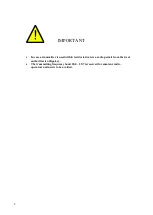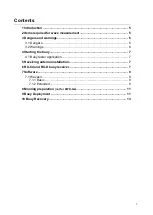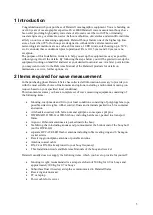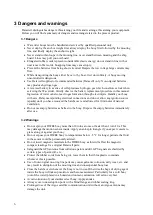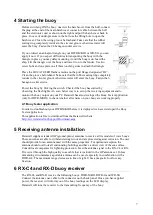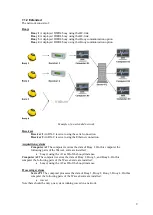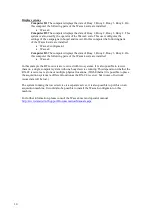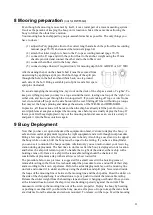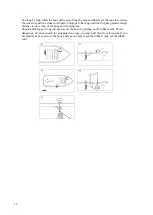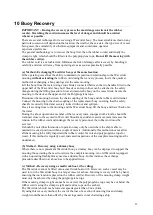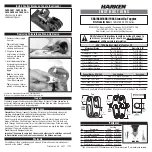
13
10 Buoy Recovery
IMPORTANT – During the recovery process the most dangerous item is the rubber
cord(s). Stretching the cord(s) increases the level of danger and should be avoided
whenever possible.
There are several techniques for recovering a Waverider buoy. The most suitable method on any
particular occasion will depend on the location, the weather, the sea state, the type/size of vessel
being used, the availability of substitute equipment and, sometimes, operator
experience/preference.
The general methodology is to recover the buoy first, then the rubber cord(s) and finally the
clump weight, which should be lifted via the polypropylene rope.
Do not lift the mooring with
the rubber cord(s).
The rubber cord is a valuable item. Minimise the risk of damage after recovery by handling it
carefully and stowed it away from operating areas as soon as practically possible.
(a) Method - Exchanging Waverider buoys at the same location
If the operating vessel has the ability to maintain its position in relationship to the Waverider
mooring
without extending
the rubber cord during the recovery process, this is the quickest
method of exchanging a buoy deployed at the same mooring:
Lift the buoy from the water using a rope bridal, connected between the two handles fitted to the
upper half of the Waverider buoy hull. Steady or anti-spin lines can be attached to the safety
triangle during the lifting procedure. Stow and secure the buoy on the vessel deck. Secure the
mooring to the deck at the upper end of the Polypropylene rope.
Disconnect the mooring between the chain coupling of the buoy and the rubber cord terminal.
Connect the mooring to the chain coupling of the replacement buoy, ensuring that the safety
shackle is correctly fitted and securely locked with nut and split pin.
Free all securing lines to the mooring and the Waverider buoy, lift the buoy and lower back onto
the water.
During the above operation a member of the recovery team, equipped with a knife, should be
stationed close to the secured rubber cord. Should any sudden vessel movement increases the
tension in the rubber cord and endanger the recovery personnel, the rubber cord must be
severed.
It should be noted that this mode of operation may only be used where the ship is able to
maintain its exact position within a couple of meters. Additionally this method does not allow
all the mooring to be fully inspected (the rubber cord(s) for cuts and polypropylene rope for
wear). If this method is regularly used, increased inspections of the complete mooring must be
undertaken.
(b) Method - Recovery using a dummy buoy
Where there is no replacement Waverider buoy, a dummy buoy can be deployed to support the
mooring thus avoiding the need to retrieve the complete mooring. An old Waverider equipped
with an operating flashlight may used as a dummy buoy. In this instance the exchange
procedure described in a) above has to be applied twice.
(c) Method - Recovery using a small work boat, rib or dingy
The Waverider cannot be lifted onto a small workboat or rib. However, such a vessel may be
used to tow the Waverider buoy to a larger vessel or ashore. Mooring recovery will be by hand,
ensuring that no tension is placed on the rubber cord(s). Recovery of the mooring clump weight
must only be achieved by using the polypropylene rope.
If the mooring clump weight cannot be recovered, the polypropylene rope may be cut below the
rubber cord leaving the clump weight and residue rope on the seabed.
The Waverider should not be towed at speeds greater than 2 m/s (4 kn).
By using this recovery method, the cost of the loss of a section of mooring line and clump
weight would be more than offset by the savings made in not chartering a ship.
Summary of Contents for Waverider DWR-MkIII
Page 4: ...4...


